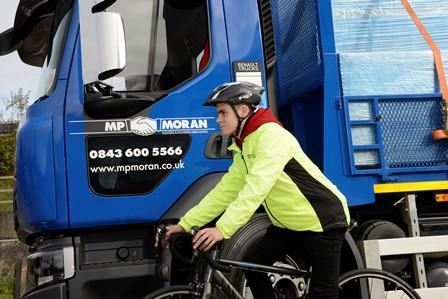
Whatever your view of London’s Safer Lorry Scheme – unnecessary, popular politics at their worst, or vital safety measure that’s long overdue - it’s a bold scheme that had been delivered quickly.
With other cities no doubt watching its performance with interest, and while the DfT still dithers about a national consultation on the issue of sideguards and uprated truck mirrors, it’s a landmark action delivered by TfL and London Councils that should prevent death and injury.
It is, beyond the headlines, also something that for the majority of large and medium fleets shouldn’t be financially onerous. This is on the basis that most will already have the required equipment fitted, in part as the industry is engaged with the issue and playing its part.
The other, straightforward, reasoning for this is that those heading into the capital need to be Low Emission Zone compliant – and therefore typically having new vehicles with higher specs – so not many trucks should need to undergo drastic change (TfL data published last year suggested that of the 70,000 vehicles travelling into the capital annually just 3,650 would be without sideguards, and 375 without class-V mirrors).
The road transport industry has previously coped in the face of tougher challenges, and of course with the safety requirements of Fors and Clocs many construction contractors already do.
Given the above, it does make London mayor Boris Johnson’s claims at the launch of the scheme on 1 September seem a little overcooked, if not disingenuous - something that is so often the case when it comes to discussions around trucks and road safety.

Johnson said at the launch earlier this week: “We are ahead of any other part of the UK in closing the legal loopholes that allowed many HGVs to operate without basic safety equipment, and I am delighted that over the 18 months since we announced the Safer Lorry Scheme the vast majority of operators have got the message and fitted safety equipment to their vehicles in anticipation of the ban.”
Yes well, done Boris, you’ve turned it all around yourself and done away with an arguably archaic but completely legal exemption for a small amount of vehicles [even within the relatively small HGV parc].
However, the mayor has decided that there’s no need to stop there and has now floated the far more costly suggestion that HGVs should all be retrofitted with side windows/panels to improve cab visibility - a move that The Hub is not certain is proportionate.
His officials suggest this can be done for around £1,000 per vehicle – we’ll reserve judgement on that – but that’s quite a cost for operators to shoulder and multiply up for a measure that doesn’t as yet have an established safety benefit beyond the anecdotal.
This, unlike the sideguards measure which, on a cost to benefit basis, seems a relative winner, will affect a significant amount of trucks on the road. And although it may be a measure worth undertaking, at this juncture it appears more of a crowd-pleasing announcement for an effective publicist than a considered measure based on careful analysis to address the important issue of road safety.
On a side note, the other proposal that the popular press has seized on from the mayor is for construction contractors to plan routes for HGVs that minimise travelling through areas with a lot of cyclists in.
As part of this left turns would be kept to a minimum – not banned as reported elsewhere with great relish – despite TfL’s own analysis last year in support of the Safer Lorry Scheme and need for sideguards revealing that the most common type of between cyclist and truck occurs when trucks are overtaking in a straight line – not turning, as is often the perceived wisdom.











